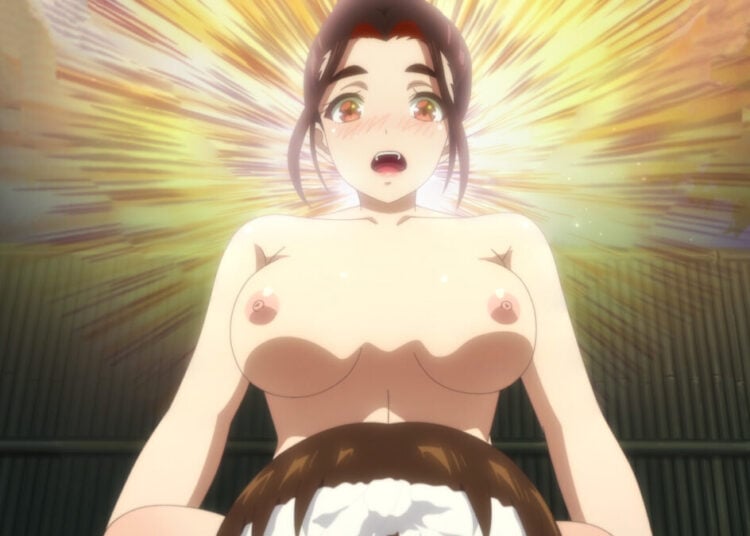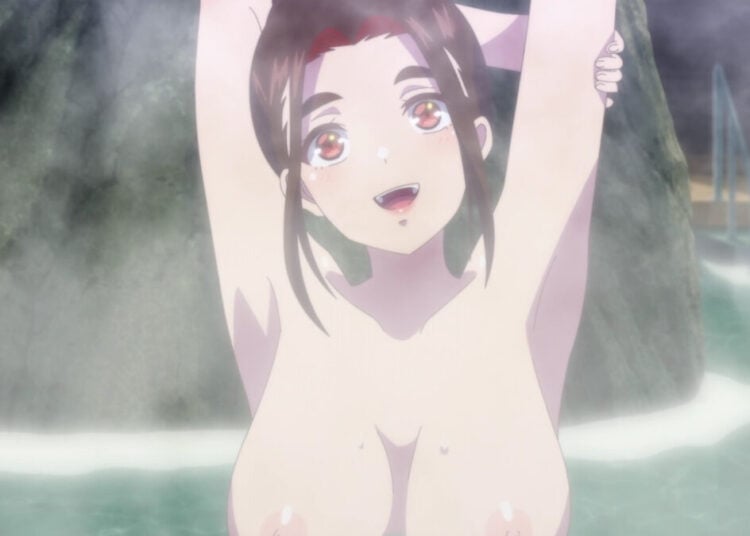You may have heard of myriad blunders made over the years in attempting to make CGI a mainstay in the anime industry, among the most notorious in recent years being EX-ARM (2021). It’s easy to forget, however, how there’s more to it than just bad visuals or laughable failures. In fact, more than a few gems exist out there that manage to pull CGI off. One of these is D4DJ First Mix (2020). While an adaptation of Bushiroad’s Dig Delight Direct Drive DJ rhythm game franchise might not be the first thing you’d associate with “CGI anime done right”, it’s nonetheless a pleasant surprise.
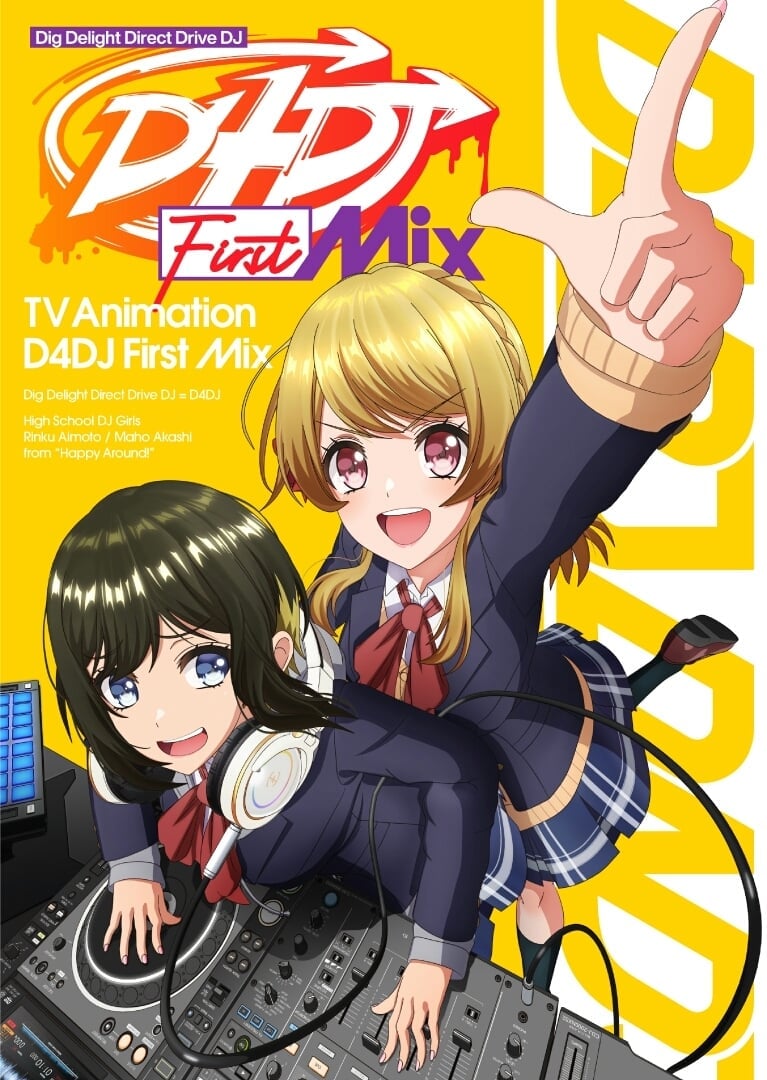
Directed by industry veteran Seiji Mizushima, the show was made by Sanzigen Animation Studio, a CGI and photography studio founded in 2003 by former GONZO staff. On the surface, it’s not all that surprising, given how Bushiroad owns an 8.2% stake in the company. However, the studio has established a reputation for quality 3D, as seen in works as varied as Arpeggio of Blue Steel -Ars Nova- (2013), and the cutscenes in Fire Emblem: Three Houses (2019). Combined with its long-standing relationship with Studio Trigger (they share the same office space), it’s clear that they’ve come a long way from their origins as a freelancing group.
The anime’s OP sequence does an excellent job of showing the CGI visuals in motion, as well as the sleek musical sequences found throughout the show. (Source: YouTube)
Just from the above, you could already tell that the people involved have some idea of what they’re doing, in contrast to the production crew behind EX-ARM. Still, did that translate into a better anime, or is it little more than disappointing fluff?
Not Your Everyday Idol Adventure
D4DJ First Mix follows Rinku Aimoto (Yuka Nishio, Emi Lo), a high-school freshman who spent much of her childhood in Africa. Upon returning to Japan, she enrolls at Yoba Girls’ Academy and soon befriends Maho Akashi (Karin Kagami), the school’s broadcaster and an up-and-coming DJ. After watching a performance by a popular DJ unit called “Peaky P-key”, however, they decide to start their own unit. Together with illustrator Muni “VJ Only” Ohnaruto (Haruka Mimura, Lily Ki) and composer Rei Togetsu (Kanon Shizaki, Anairis Quiñones), they form “Happy Around!” and shoot for fame, having some fun along the way.

On the face of it, the premise might not sound out of the ordinary, especially if you’re familiar with the likes of The Idolmaster or Bushiroad’s earlier BanG Dream! franchise. Moreover, there isn’t really an antagonist to speak of, unless one counts the competition among the myriad DJ units. Yet while the concept of an up-and-coming group’s rise to the top is far from original, the execution still makes it work. On top of the various musical numbers, including some “Battle Mix Party” duels straight out of the rhythm game, there’s a certain natural flow to how Happy Around! goes from amateurs to genuine contenders. The show’s spotlight on DJs and being an independent musical group rather than idols (though there are some jabs at talent managers and industry hijinks) also lends a unique spin to an otherwise done-to-death premise.
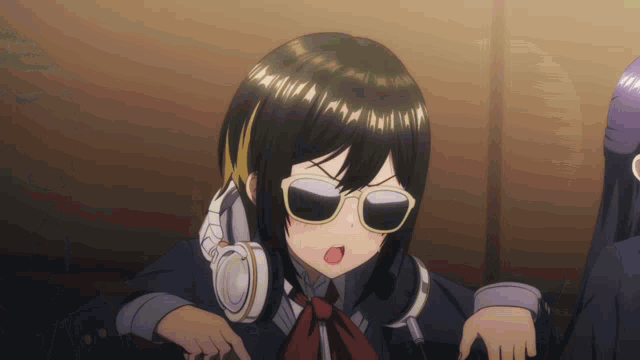
Similarly to K-On!, meanwhile, the anime focuses as much on the characters in their day-to-day lives as on their musical ambitions. Although the leads tend to fit the usual archetypes — whether it’s Rinku’s upbeat newcomer persona or Rei being a rich pianist wanting to be her own girl — enough attention is placed on their own personal relationships and interests. One recurring story arc even focuses on the childhood friendship between Rinku and Muni, which ultimately builds up into being the setup for the penultimate episode. These go a long way to making them, as well as their erstwhile “rivals”, distinctive and likable enough that you want to see more of them.
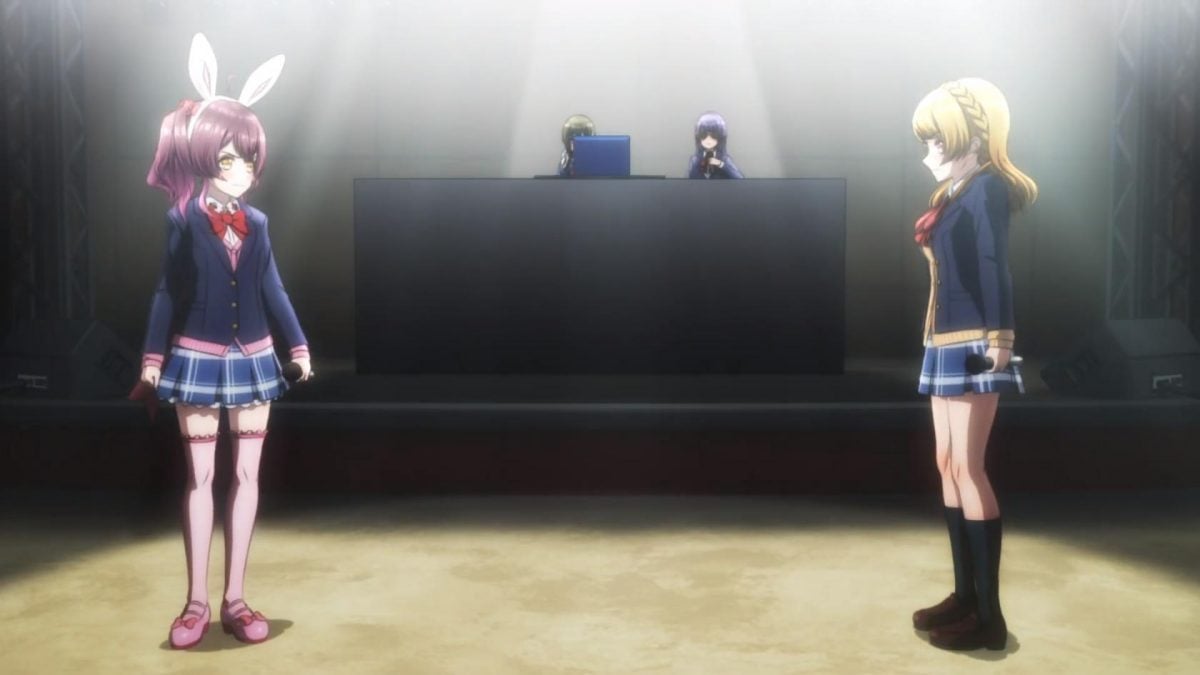
A Sight for Sore Eyes
All of the above would make for an, at best, fairly entertaining series. What makes D4DJ First Mix especially notable, however, would be the visuals. Sanzigen has been known for clinging to, and refining, the idea of making computer-generated content look as close to conventional anime as possible. This is achieved not just by using cel-shading to have the 3D models (notably seen with the girls themselves) designed to match the 2D art used elsewhere in any given scene, but also by dropping frames to emulate limited animation and streamlining the process such that it could be done in-house. Granted, the studio’s practices have historically been met with skepticism, given how some of its earlier work, like Black★Rock Shooter (2012), seemed to validate those who view traditional methods as better. Yet, the movement and expressions on-screen are as dynamic as in any good show, while the synthesis of 3D and 2D stays constant throughout, whether it’s long hair or even during the camera-panning musical sequences. Though the clash in styles can be noticeable, it’s often so seamless that it’s easy to forget that you’re watching a CGI anime. Clearly, the staff’s commitment has paid off.
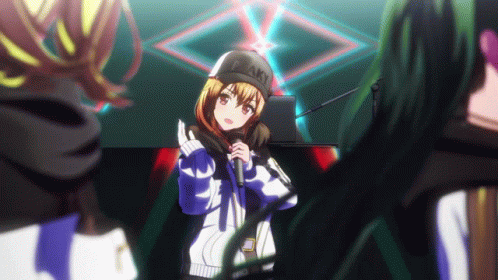
Which isn’t to downplay the audio, befitting the franchise’s name. The performances are generally good regardless of which dub is used, with Karin Kagami notably doing the English voice lines herself. This extends to the musical ones as well. On top of the myriad numbers done by the cast, there’s a wide variety of genres to be found in the soundtrack, ranging from J-pop to rap, techno, dubstep, and classical, to say nothing of the energetic opening numbers. The result is a unique repertoire that further makes the anime stand out from its counterparts.
On top of the solid visuals, the music itself can be just as addictive. (Source: YouTube)
Beyond getting a 7.7 on MyAnimeList and an 8.1 on IMDb, reviewers and fans alike unsurprisingly have lavished praise on the show. Though there are still a few technical quibbles, these don’t distract from the series’ overall quality, or how likable the characters are. Given that a second season, D4DJ All Mix, is slated for a Winter 2023 premiere, it’s clear that the long-term popularity of the franchise at large is assured.
Even clips used for various memes highlight the anime’s best aspects, both in sights and sounds. (Source: YouTube)
If anything, the series’ success is not just a glimpse of what EX-ARM could have been, it is also a welcome reminder of how far CGI anime has come, and how, if done right, it has the potential for pushing the anime industry forward without sacrificing the best aspects of the medium.


